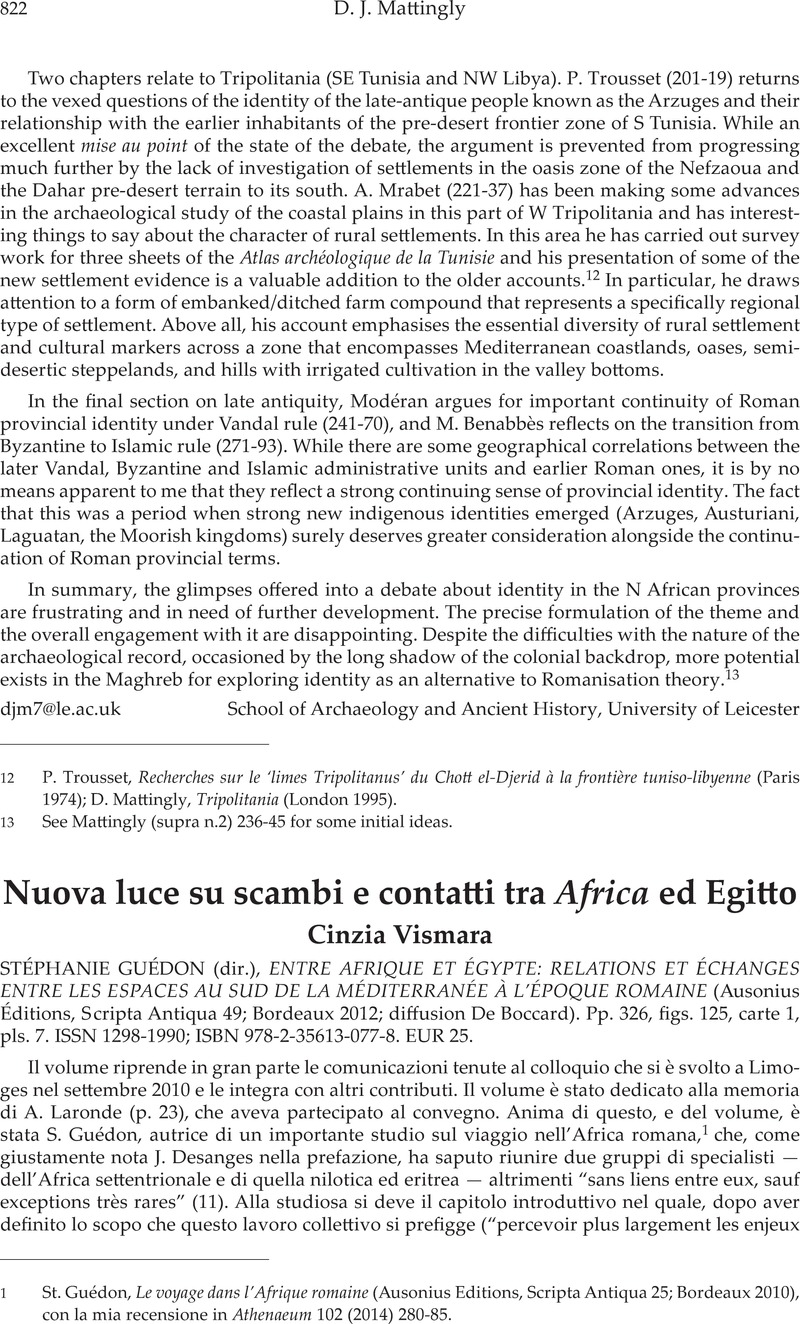Article contents
Nuova luce su scambi e contatti tra Africa ed Egitto - STÉPHANIE GUÉDON (dir.), ENTRE AFRIQUE ET ÉGYPTE: RELATIONS ET ÉCHANGES ENTRE LES ESPACES AU SUD DE LA MÉDITERRANÉE À L’ÉPOQUE ROMAINE (Ausonius Éditions, Scripta Antiqua 49; Bordeaux 2012; diffusion De Boccard). Pp. 326, figs. 125, carte 1, pls. 7. ISSN 1990-; ISBN 978-2-35613-077-8. EUR 25.
Published online by Cambridge University Press: 27 November 2014
Abstract

- Type
- Reviews
- Information
- Copyright
- Copyright © Journal of Roman Archaeology L.L.C. 2014
References
1 Guédon, St., Le voyage dans l’Afrique romaine (Ausonius Editions, Scripta Antiqua 25; Bordeaux 2010)Google Scholar, con la mia recensione in Athenaeum 102 (2014) 280–85Google Scholar.
2 Horden, P. e Purcell, N., The corrupting sea. A study of Mediterranean history (Oxford 2000)Google Scholar.
3 Coulon, D. e Valérian, D., in Coulon, D. et al. (edd.), Espaces et réseaux en Méditerranée, VIe-XVIe siècles, I. La configuration des réseaux (Saint-Denis 2007) 9–18 CrossRefGoogle Scholar.
4 Hope, C., “Egypt and ‘Libya’ to the end of the Old Kingdom: a view from the Dakhleh Oasis,” in Hawass, Z. and Richards, J. (edd.), Archaeology and art of ancient Egypt: essays in honor of David B. O’Connor (Cairo 2007) 349–415 Google Scholar.
5 Supra n.1.
6 Nondimeno le misure non vengono fornite per tutti gli oggetti (ad es., il Bes di fig. 5, le custodie di amuleti di fig. 8, il pilastro in pietra di fig. 19). Le riproduzioni non sono in scala (le figg. 15 e 16 a p. 79, raffiguranti rispettivamente una lastrina magica misurante cm 9 × 6,5 e una stele di cm 59 × 46, hanno identiche dimensioni; così la statua di fig. 2, circa 1/3 del tenone della fig. successiva). Le figg. 15 e 16 sono invertite.
7 “SB 6.9025, cotton and the economy of the Small Oasis,” BASP 45 (2008) 21–30 Google Scholar.
8 “Water and society in the ancient Maghrib: technology, property and development,” AntAfr 20 (1984) 121–73CrossRefGoogle Scholar.
9 Barker, G., Gilbertson, D., Jones, B. e Mattingly, D. (edd.), The UNESCO Libyan Valleys Archaeological Survey. Synthesis. Farming the Desert. II. Gazetteer and pottery (Tripoli 1996)Google Scholar.
- 2
- Cited by


